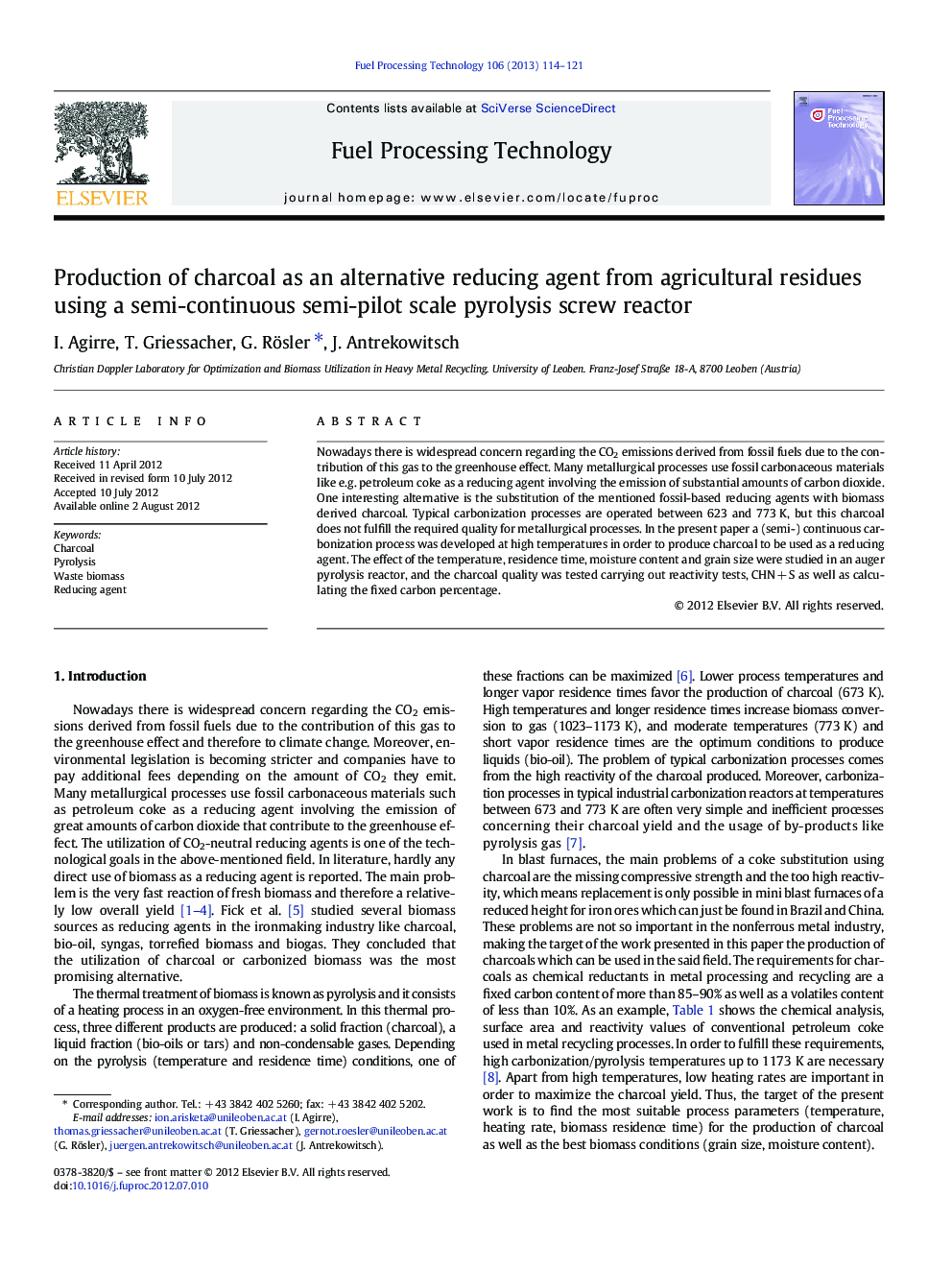| Article ID | Journal | Published Year | Pages | File Type |
|---|---|---|---|---|
| 210042 | Fuel Processing Technology | 2013 | 8 Pages |
Nowadays there is widespread concern regarding the CO2 emissions derived from fossil fuels due to the contribution of this gas to the greenhouse effect. Many metallurgical processes use fossil carbonaceous materials like e.g. petroleum coke as a reducing agent involving the emission of substantial amounts of carbon dioxide. One interesting alternative is the substitution of the mentioned fossil-based reducing agents with biomass derived charcoal. Typical carbonization processes are operated between 623 and 773 K, but this charcoal does not fulfill the required quality for metallurgical processes. In the present paper a (semi-) continuous carbonization process was developed at high temperatures in order to produce charcoal to be used as a reducing agent. The effect of the temperature, residence time, moisture content and grain size were studied in an auger pyrolysis reactor, and the charcoal quality was tested carrying out reactivity tests, CHN + S as well as calculating the fixed carbon percentage.
► Study of charcoal quality obtained by fruit cutting pyrolysis at various conditions ► Besides retention time, grain size and moisture, temperature is the main parameter. ► High moisture content leads to significant decrease in charcoal yields. ► Charcoal for non-ferrous metal production and recycling can be obtained at 1173 K
